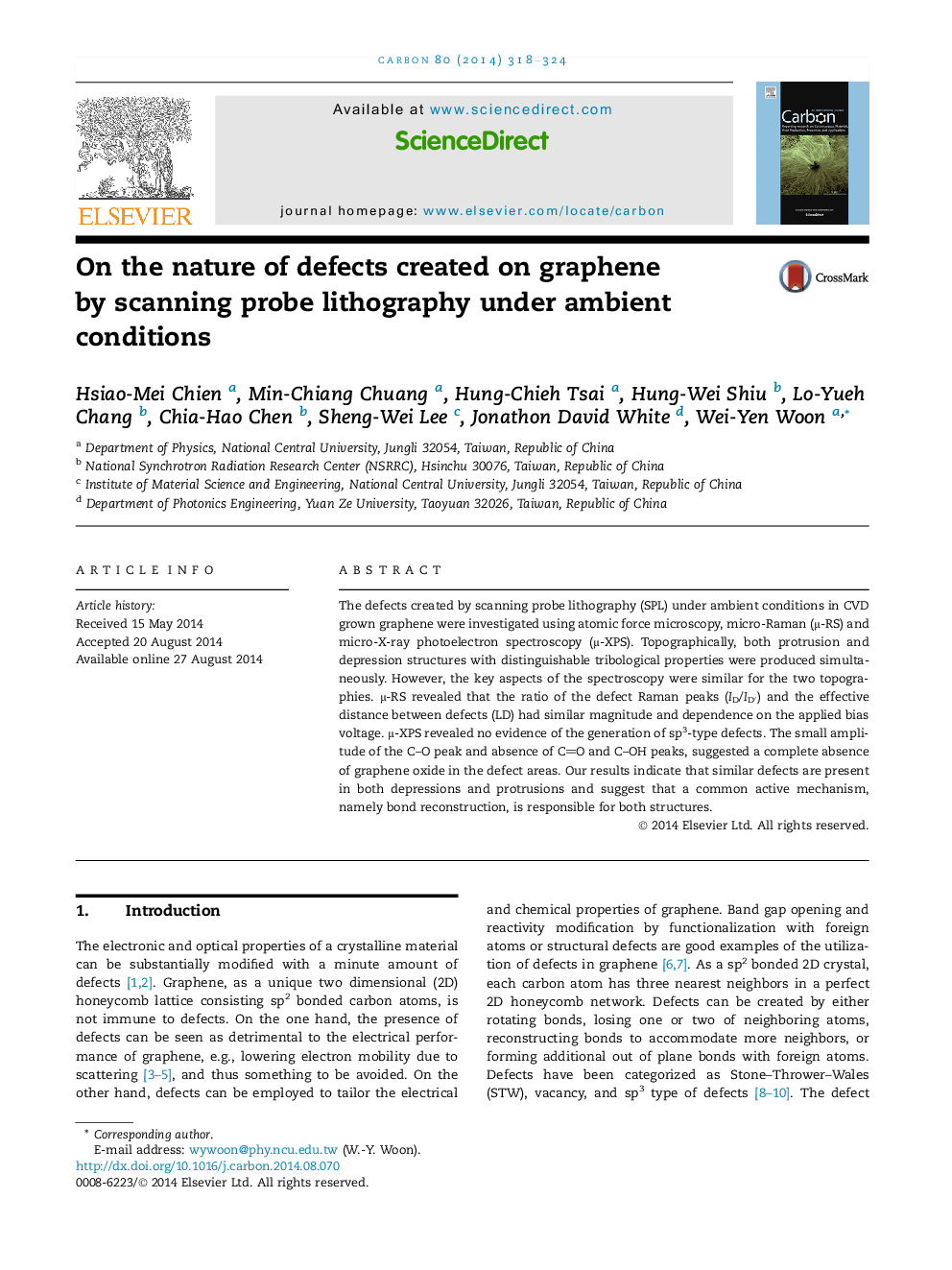| Article ID | Journal | Published Year | Pages | File Type |
|---|---|---|---|---|
| 1413728 | Carbon | 2014 | 7 Pages |
The defects created by scanning probe lithography (SPL) under ambient conditions in CVD grown graphene were investigated using atomic force microscopy, micro-Raman (μ-RS) and micro-X-ray photoelectron spectroscopy (μ-XPS). Topographically, both protrusion and depression structures with distinguishable tribological properties were produced simultaneously. However, the key aspects of the spectroscopy were similar for the two topographies. μ-RS revealed that the ratio of the defect Raman peaks (ID/ID′) and the effective distance between defects (LD) had similar magnitude and dependence on the applied bias voltage. μ-XPS revealed no evidence of the generation of sp3-type defects. The small amplitude of the C–O peak and absence of CO and C–OH peaks, suggested a complete absence of graphene oxide in the defect areas. Our results indicate that similar defects are present in both depressions and protrusions and suggest that a common active mechanism, namely bond reconstruction, is responsible for both structures.
